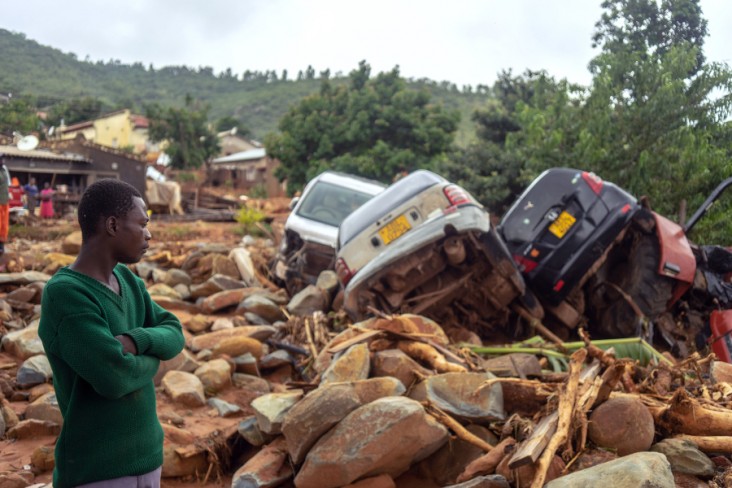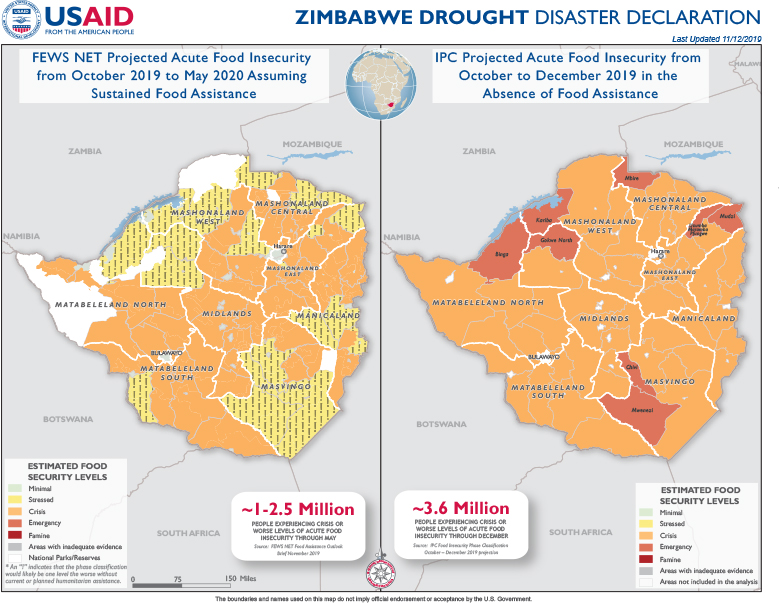- What We Do
- Agriculture and Food Security
- Democracy, Human Rights and Governance
- Economic Growth and Trade
- Education
- Environment and Global Climate Change
- Gender Equality and Women's Empowerment
- Global Health
- Humanitarian Assistance
- Transformation at USAID
- Water and Sanitation
- Working in Crises and Conflict
- U.S. Global Development Lab
Speeches Shim

Latest Zimbabwe Fact Sheet
2020_09_30 USG Southern Africa Fact Sheet #3 ![]() (pdf - 432k)
(pdf - 432k)
view text version [pdf, 191kb]
2020_09_30 USG Southern Africa Program Map ![]() (pdf - 2 MB)
(pdf - 2 MB)
Zimbabwe Drought Map - 11-12-2019 ![]() (pdf - 4 MB)
(pdf - 4 MB)
Key Developments
More than 5.4 million people in rural areas of Zimbabwe will likely be food insecure during the January- to -March 2021 peak of the lean season. Additionally, the UN World Food Program estimated that 3.3 million people in urban areas of Zimbabwe were food-insecure in April 2020, an increase of 1.1 million people compared to September 2019. This is due to the combined effects of drought, economic recession, and the country’s COVID-19 outbreak. The nationwide COVID-19 lockdown has contributed to a loss of livelihood opportunities in urban areas, prompting a decline in remittances and a return of unemployed migrants to their villages amid worsening food insecurity, while climatic shocks, continued high rates of inflation, and above-average food costs continue to amplify food access gaps.
USAID is also responding to disasters in neighboring Southern Africa countries.
Background
Zimbabwe has experienced multiple years of drought, with conditions exacerbated by the 2015-2016 El Niño climatic event. Zimbabwe also experiences other natural hazards, including tropical cyclones, flooding, and pest infestations. USAID has responded to humanitarian needs resulting from drought and other disasters, while also supporting interventions to build community resilience to mitigate and respond to future shocks.


Comment
Make a general inquiry or suggest an improvement.